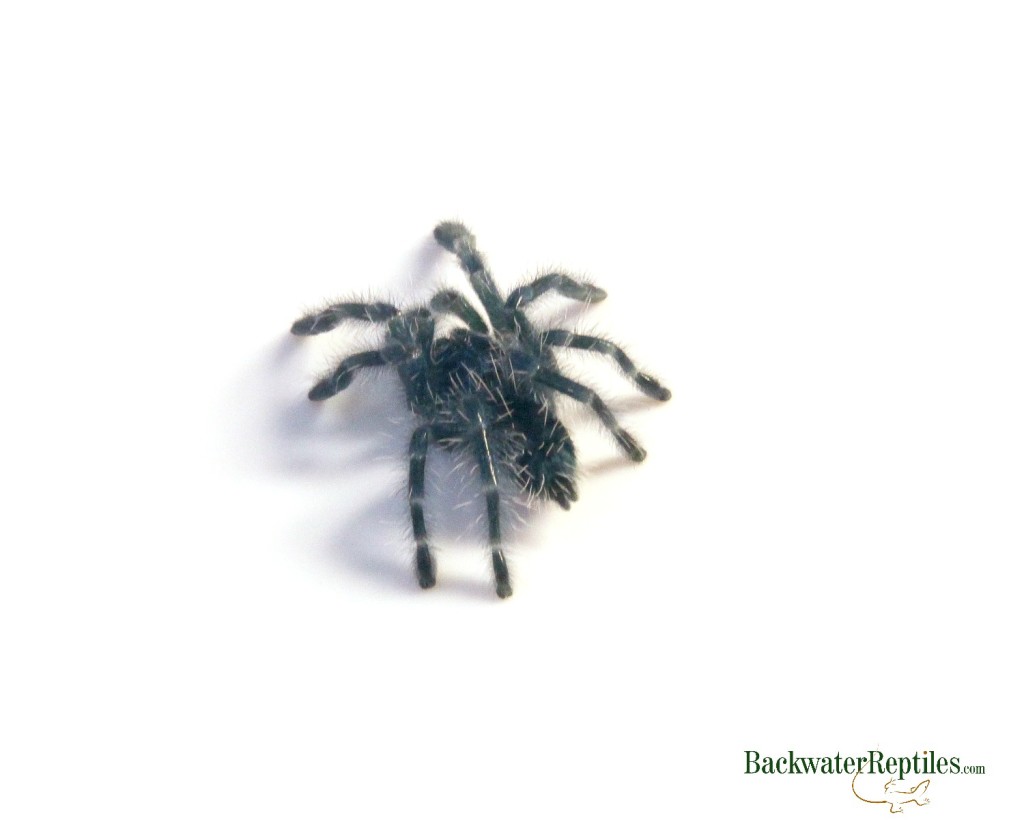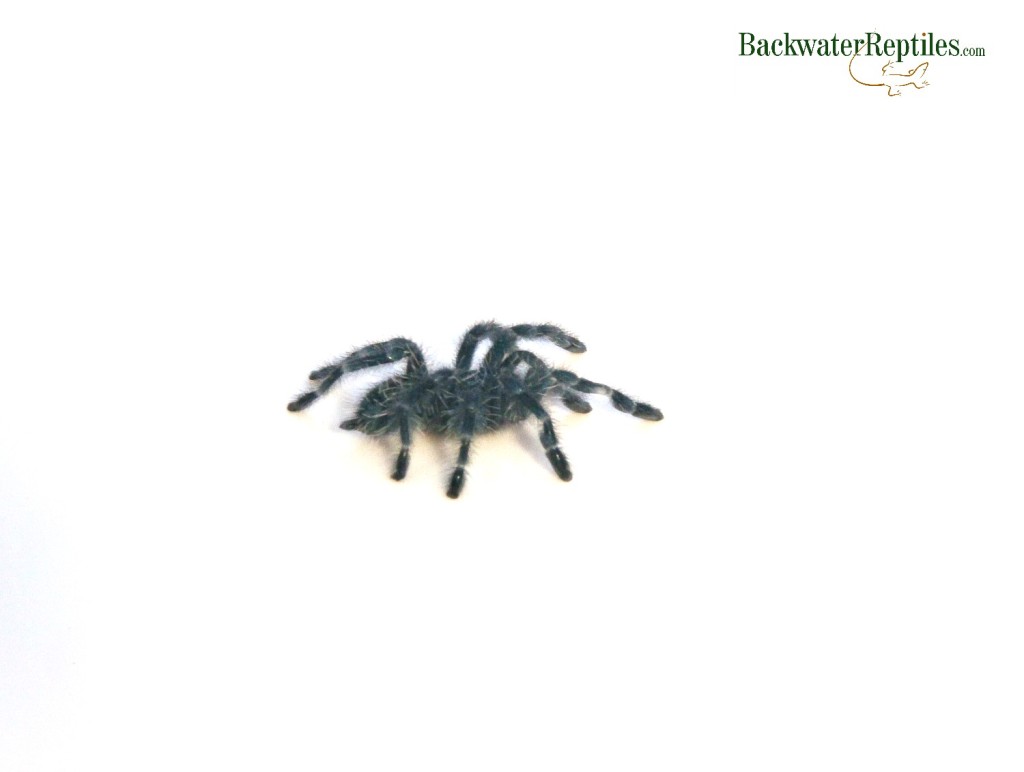Many exotic pet enthusiasts are drawn to the Antilles pink toe tarantula for its striking coloration and fairly mild disposition. People enjoy purchasing these tarantulas as spiderlings and watching the animal molt, change color, and mature into a big, beautiful arachnid.
Below you’ll read our Antilles pink toe care sheet, based upon our experience with these strikingly beautiful tarantulas.
Antilles Pink Toe Tarantula Description
This brilliantly colored spider is found in Martinique, which is off the coast of South America. It makes its home in trees and is therefore also commonly called the Martinique Red Tree Spider.

As baby spiders, Antilles pink toes are a metallic, steely blue-black color, but once mature, they become remarkably more colorful. Adults have a metallic greenish blue carapace while their abdomens are covered in red hairs. Their long legs are coated in a combination of red, brown, and pink hairs.
Antilles pink toes are considered to be medium-sized spiders. Adults will grow to have leg spans of four and a half to six inches. Males will be thinner than females with a more spindly-like appearance, while the females will tend to be a bit meatier and heftier of body.
The disposition of these colorful spiders is relatively even-tempered. They are not particularly aggressive, although they can and do bite from time to time. Overall, they prefer to be left alone as they can be quite skittish. In fact, Antilles pink toes are very fast and can jump quite far. This means that if you do handle your spider, you’ll want to stay near to a flat surface and make sure that the spider doesn’t have very far to fall if it should decide to jump out of your hands.
Antilles Pink Toe Tarantula Housing
Because they are an arboreal species, Antilles pink toes should be kept in an enclosure that is vertically oriented. Be sure to provide hide spaces and objects to climb on. Plants, wooden decorations, and other stable, vertically-oriented pieces are best.
The cage or enclosure needs to be kept at a relatively high humidity level, but also needs to be well ventilated to prevent stagnation. Generally, enclosures with one or two mesh screens or vents meet this requirement. Ideally, humidity levels should be kept at 75 to 85%, while the temperature range should be 78 to 82 degrees Fahrenheit.

Although they live in colonies in the wild, in captivity, Antilles pink toe tarantulas should be housed separately with the exception of mating pairs.
Antilles Pink Toe Tarantula Feeding Habits
These tarantulas are aggressive feeders and usually don’t reject food. It is acceptable to feed your Antilles pink toe nearly any type of feeder invertebrate – roaches, crickets, mealworms, wax worms, and horn worms are all great fare for this spider.
Interestingly enough, in the wild, Antilles pink toes are known to consume anole lizards and other small vertebrates, but in captivity, it’s best to stick to various insects.
Antilles Pink Toe Tarantula Molting
If you’ve never kept a pet tarantula before, you need to know that spiders molt and shed their old exoskeletons on a regular basis.
Prior to the actual molt occurring, tarantulas generally start to behave differently, and this is also true for the Antilles pink toe. Don’t be surprised if your spider becomes lethargic and even refuses food. The spider might also do a lot of extensive web spinning.
Eventually, you’ll notice that your tarantula has flipped over onto its back. It will appear to be dead, but don’t be misled. This is a completely normal behavior for molting spiders. Just be sure to not disturb your spider when it is in this state.

Once your tarantula has righted itself, it will be vulnerable until its new exoskeleton hardens. Be sure not to feed it until a fair amount of time has passed. Feeder insects can actually hurt the spider if you feed it before the hardening process has completed.
If you want more information on this process, we wrote an entire separate article on what to do when your pet tarantula molts.
Conclusion
Antilles pink toe tarantulas are best looked at and kept as pets for display purposes. They are not considered aggressive, but are very fast and can jump far. This means they are not ideal for being handled or coddled.
If you are ready to commit to a colorful spider that you can show off to your friends and family, Backwater Reptiles has Antilles pink toe tarantulas for sale.
